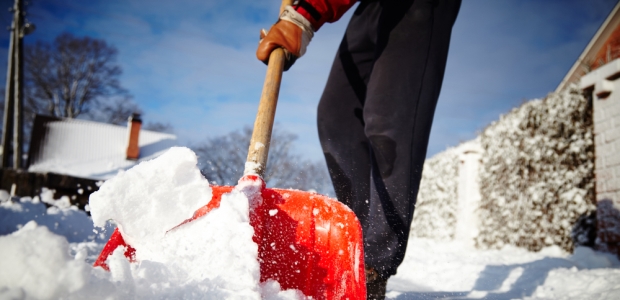
Four Tips for Keeping Your Hands Toasty While Working in the Cold
Let's take a look at some of the easiest ways to make sure your hands are always up for the job, regardless of the weather.
- By Julie McFater
- Nov 01, 2015
As the leaves begin to fall, the sun starts to set earlier in the day, and it becomes more and more acceptable to wear fuzzy sweaters outside of the house instead of solely during a weekend-long Netflix marathon, there’s no denying that it's that time of year again….
As much as we dread saying the word, over here in Canada, as the weather starts to rapidly change from warm and sunshine-y to chilly and miserable on the regular, there's no denying that the wrath of the unbearable cold will soon be well on its way. However, here at Superior Glove, we don't believe in the old "Cold hands, warm heart" myth. As the temperature drops lower and lower, we'd much rather help you in your search for the warmest pair of work gloves on the market.
Because gloves can make a world of a difference when you're working outside in the colder months, we've compiled a list of things you can look for to help you in your search for the warmest pairs of work gloves on the market. Why let your digits be frigid when it's so easy to keep them toasty?
Let's take a look at some of the easiest ways to make sure your hands are always up for the job, regardless of the weather.
Make Like a Cat: Avoid the water
Most of the time, you'll probably encounter at least some moisture while working outside during winter. Because of this, the easiest way to stop your fingers from freezing is to think about whether or not you'll be coming into contact with water while you're on the job; depending on the work you'll be doing, in some cases, you might even encounter ice and snow regularly, as well.
If you know you're going to get your hands wet, make sure you choose gloves that have waterproof membranes in them so that your hands will stay warm, even after considerable water exposure. Otherwise, they'll get wet, and you'll be even colder! Brrrrrrr!
Go, Go Gadget: Sweat Control?
Although it might seem gross to think about, moisture control isn't just about keeping snow, ice, and rain out of your gloves—you'll have to factor in your sweat, too. When it comes to staying warm, sweat is problematic because it causes heat to move away from your body. In fact, water carries heat away from the body 25 times faster than air because of its density. That's why it's really important to try to minimize sweating as much as possible.
One of the best ways to do this is to choose gloves that are made of materials that won't make you sweat as much. For example, avoiding gloves made of cotton is wise because it works to absorb both heat and moisture. Instead, choose gloves made from a synthetic fiber such as polypropylene. If you'd rather choose gloves made from an all-natural fiber, opt for wool instead of cotton. Your hands will stay a lot dryer and warmer.
Thinsulate® for the Win!
If you know you're going to be working in extreme cold, choose a glove with multiple layers. If you know you'll be in temperatures below -5° C (20° F), we'd recommend you opt for the tried and true Thinsulate®.
Thinsulate is the warmest material for thin glove insulation that's currently available on the market. It's known for its ability to trap warmth because it's made of a mixture of different polymers. The genius of Thinsulate is that the material has a high level of fiber density: The gaps between the fibers simultaneously reduce heat flow and allow moisture to escape, which helps keep you much cooler.
The combination of warmth and thinness makes Thinsulate a "must have" for those seeking great cold weather gloves.
Don't Forget Your 'Tips
When choosing winter gloves, don't forget about your fingertips! Often, poorly designed gloves allow heat to escape directly out of seams in the fingers and other areas. Your fingers tend to get colder the fastest because they don't have major muscles to produce heat. When conditions become colder, the body stops providing as much blood flow to the extremities. The best way to prevent this from happening is to make sure you choose gloves with extra lining and/or support at the seams.
Final Considerations
When it comes to keeping your hands warm in freezing weather, there are lots of things for you to consider in order to make sure you select the best glove for your needs. You might have to shell out a little bit more for higher-quality, well-engineered gloves, but if you follow our expert tips above, your hands will thank you.
This article originally appeared in the November 2015 issue of Occupational Health & Safety.